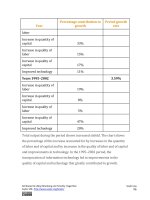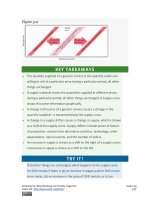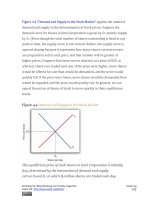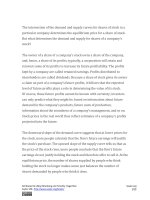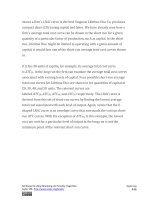Authors libby rittenberg 742
Bạn đang xem bản rút gọn của tài liệu. Xem và tải ngay bản đầy đủ của tài liệu tại đây (365.81 KB, 1 trang )
price setter in its factor market. Both firms must change price to change
quantity: The monopoly must lower its product price to sell an additional
unit of output, and the monopsony must pay more to hire an additional
unit of the factor. Because both types of firms must adjust prices to change
quantities, the marginal consequences of their choices are not given by the
prices they charge (for products) or pay (for factors). For a monopoly,
marginal revenue is less than price; for a monopsony, marginal factor cost
is greater than price.
Figure 14.4 Monopoly and Monopsony
The graphs and the table provide a comparison of monopoly and
monopsony.
Both types of firms follow the marginal decision rule: A monopoly
produces a quantity of the product at which marginal revenue equals
marginal cost; a monopsony employs a quantity of the factor at which
marginal revenue product equals marginal factor cost. Both firms set
prices at which they can sell or purchase the profit-maximizing quantity.
The monopoly sets its product price based on the demand curve it faces;
Attributed to Libby Rittenberg and Timothy Tregarthen
Saylor URL: />
Saylor.org
742
